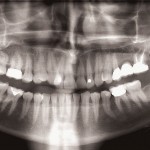 In Part 1 of this article, we discussed the basics of Cone Beam Computed Technology (CBCT) 3D imaging. Part 2 of this article will be devoted to how CBCT impacts comprehensive treatments, diagnosing pain, programs a Multi Modality Machine should have.
In Part 1 of this article, we discussed the basics of Cone Beam Computed Technology (CBCT) 3D imaging. Part 2 of this article will be devoted to how CBCT impacts comprehensive treatments, diagnosing pain, programs a Multi Modality Machine should have.
Comprehensive Treatment
A good MMM can have the potential to render varying size 2D and 3D images, and isn’t restricted. It has the advantage of rendering a single small tooth scan and also the ability to do a bilateral or full scan. If the patient has a history of dental restorations or is anticipating additional treatment in the future, having a one-time CBCT scan has several advantages:
• Increased success with treating current endodontic teeth
• Knowledge of all root morphology for future treatment.
• Diagnosing undeveloped problems, a valuable feature
• Bilateral is a lot more comprehensive for implant placement and guide fabrication
• Less radiation and less time consuming to do one scan instead of many small volume scans
Prescreening for medical procedures is a walk in the park with the correct MMM. Dentists and endodontists look to it to rule out any major dental problems, particularly chronic infections. This means patients who are undergoing radiation treatment, medication treatment, cardiac, orthopedic, and surgical procedures. A bilateral volume is the most effective rendering to have done, and a 3D imaging machine that handles solely small volume requires your dentist to take multiple images. This adds up to a bigger overall dose of radiation with a lot more quantifying and sending out diagnostic data.
Diagnosing Pain
A good CBCT 3D imaging unit should be better able to assist with diagnosing pain. In some cases, a patient will have tooth or mouth pain that seems to be acute or chronic, and it could be stimulated or unstimulated. Dentists can get a broad image of the target area, and focus in on a lot of detail employing a 3D rendering.
This technology empowers dental professionals to comprehensively examine patients to a degree never before possible. From the beginning, our profession has based our radiographic interpretation and identification on standard 2D imaging. With the introduction of 3D imaging, lesions and encompassing anatomical structures have a definite distinction. It’s a definitive advantage to utilize 3D imagine in dentistry.
Other Uses
3D imagery in dentistry is utilized for not only diagnosing pain and problems, but in constructing dental fixtures and planning a patient’s treatment. In some cases, this imaging takes the place of the traditional method of taking impressions with plaster or cement. The extremely high level of data obtained with this equipment means faster diagnosis of all sorts of dental issues. It is yet another example of how technology advances medicine.
